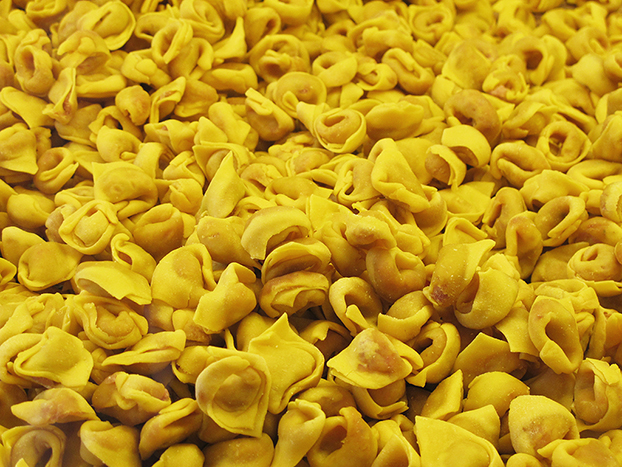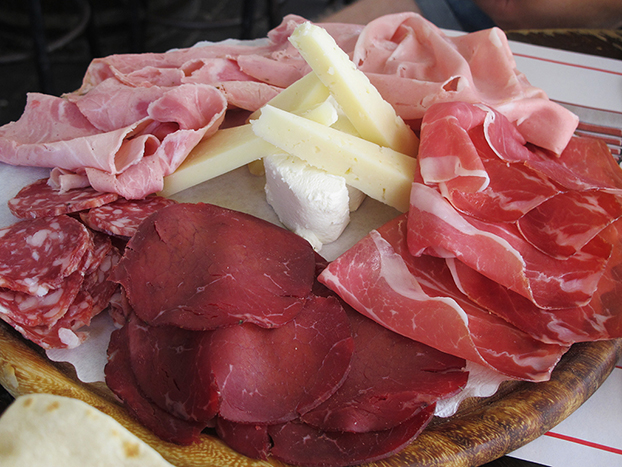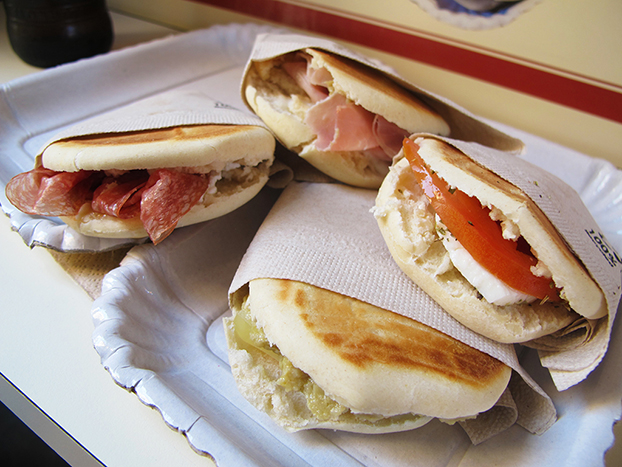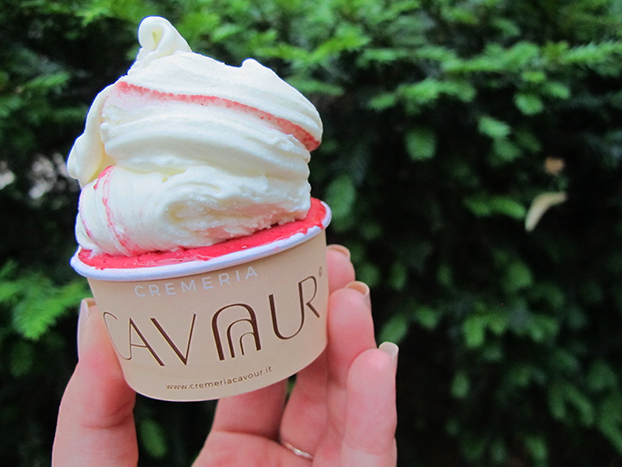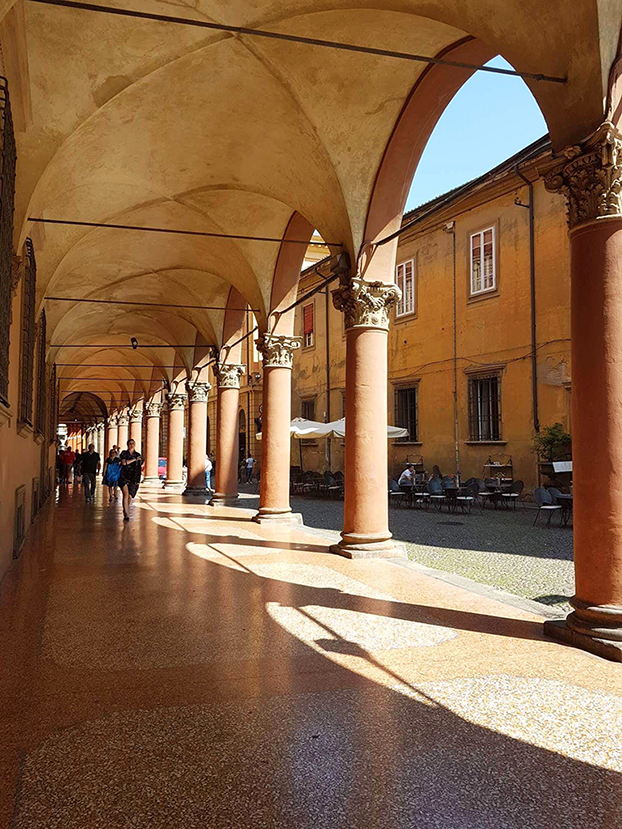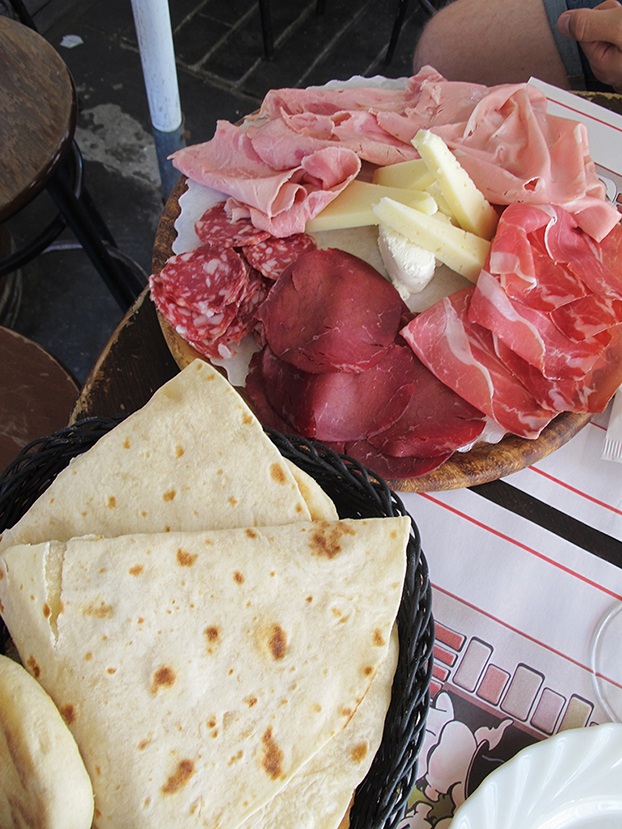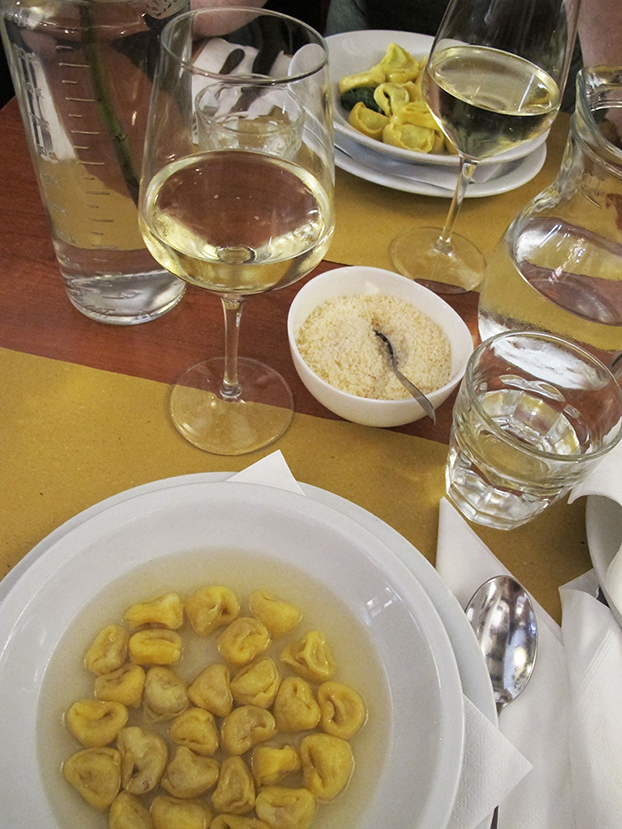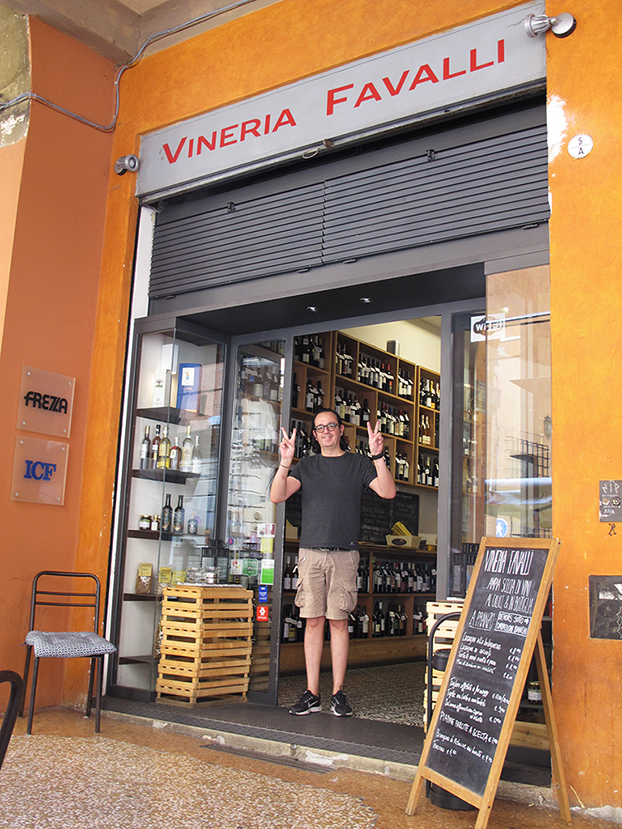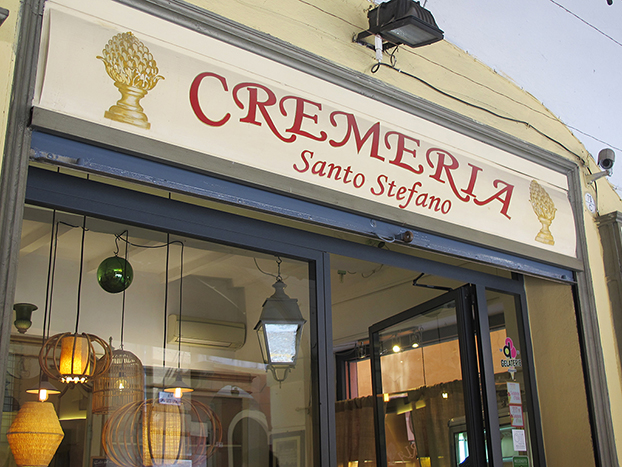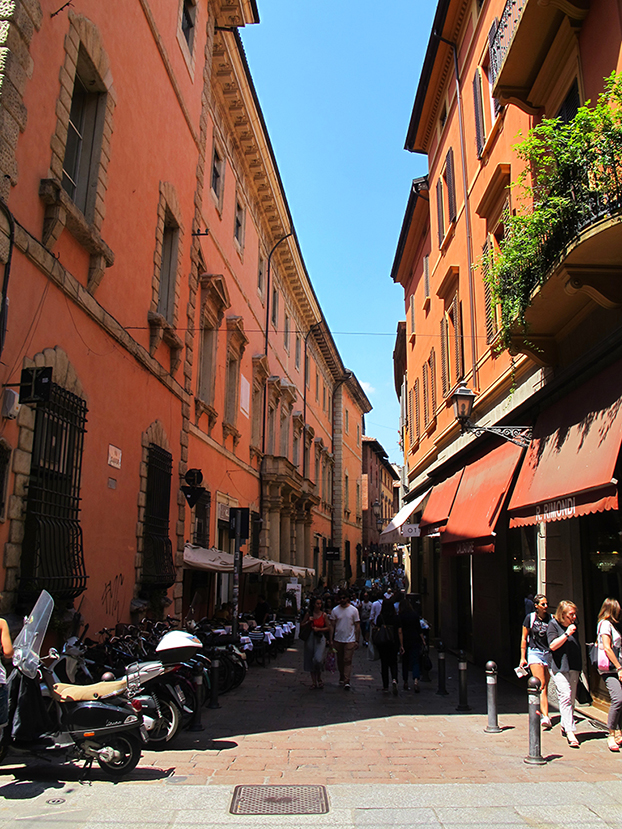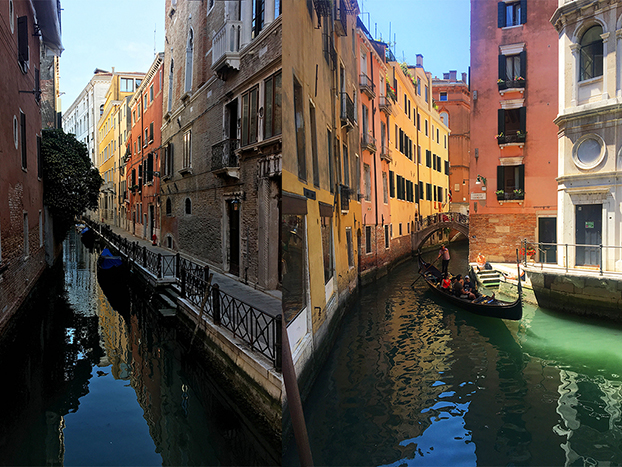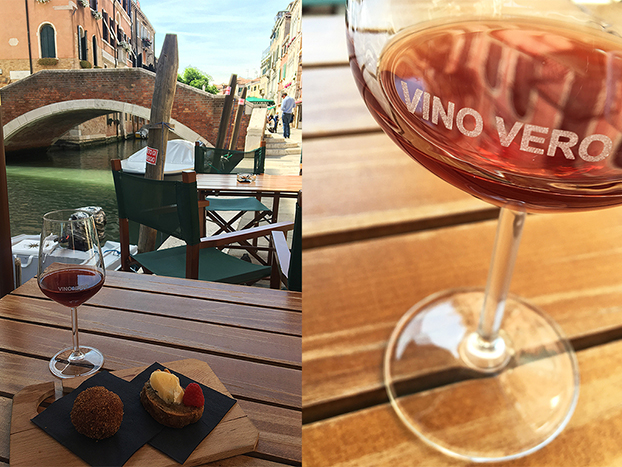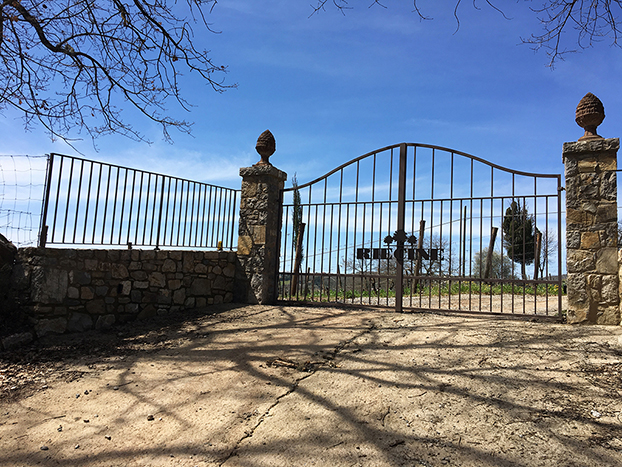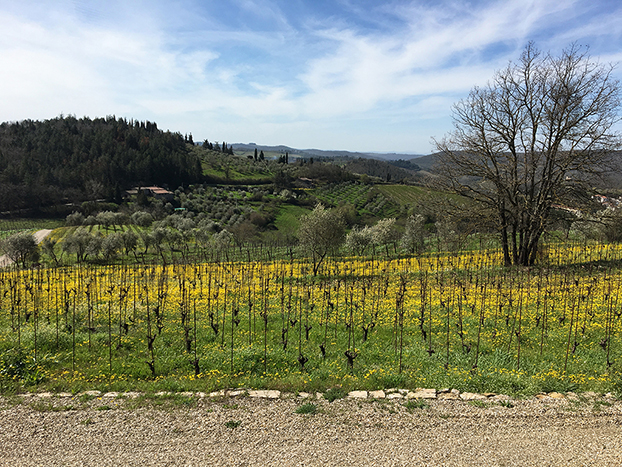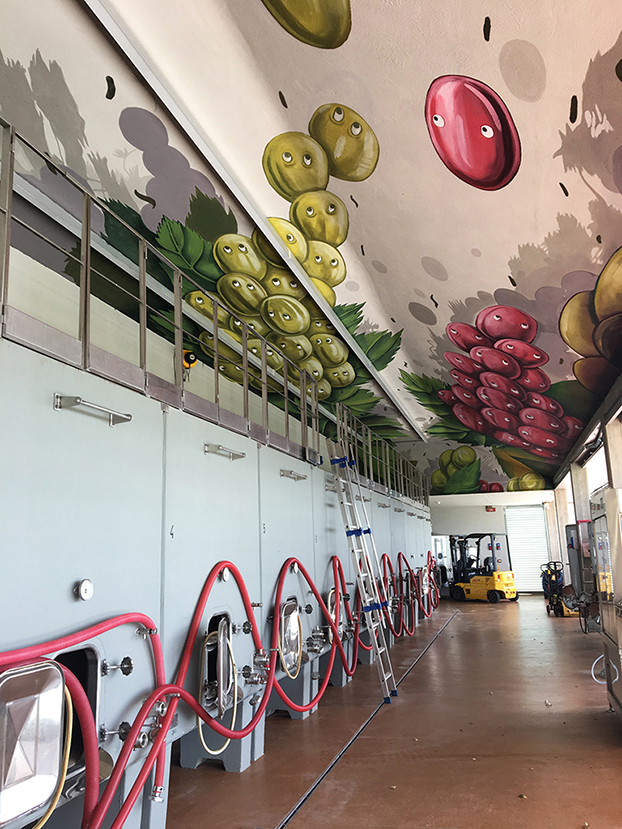Wine blog
by Tina
Top 10 foods to try in Bologna
The city of Bologna in Italys Emilia-Romagna region is called “La Grassa”, meaning the fat one. That refers to all the good food there is to try here. Many say that Bologna is Italys food capital and indeed they do have a nice amount of good foods to try while here! See my top 10 foods not to miss when in Bologna below. If you want to find the best spots for eating in the city you can read my old post about restaurants/bars in Bologna.
Spaghetti alla Bolognese
You are very unlikely to find Spaghetti Bolognese in Bologna or its neighboring towns, simply because it is not called Spaghetti Bolognese here. Instead it is called Tagliatelle al ragù and it is quite different from the one you might have tried before… First of all tagliatelle is another type of pasta, flat compared to spaghetti, and secondly the ragù-sauce is often not a sauce at all but a very thick ragu made from meat and root vegetables, usually with no or little tomato sauce. None the less, it is very good and very classic for the region.
Lasagna
Bologna is said to be the home town of lasagna (even though many other places have tried to claim that they are in fact the real home of the famous dish). If you have not tried lasagna before it is made from flat pasta plates, a meat ragu and a cheese sauce called béchamel. In Bologna it is common to have green pasta plates and to call the lasagna “Lasagne Verde”, meaning green lasagna. The green color comes from spinach.
Tortellini in brodo
Tortellini is very common here, in many different forms. My favorite one (and a very classic dish) is Tortellini in brodo, which is tortellini in broth. Tortellini are small meat-filled pastas and they are served in a savory broth that you can top with the local cheese, Parmigiano Reggiano for extra flavor.
Mortadella
Mortadella is one of the most famous foods of Emilia-Romagna and it is a charcuterie, a very big cooked pork sausage served in thin slices. It is often flavored with various spices, like black pepper, olives and pistachios. It is a very creamy type of sausage/salami with a mild flavor.
Prosciutto di Parma
This meat is also known as ”parma ham” and comes from the hind leg of a pig. Unlike Mortadella it is not cooked but what you call “crudo”, meaning it has been salted and dry aged. Prosciutto is made in many regions of Italy but the parma ham is the one most well known and it’s a must try when in Bologna.
Parmigiano Reggiano
Who hasn’t heard of this cheese? Made from cow milk and aged for a minimum of 12 months it is hard, salty and very flavorful. By now it is protected as a DOP (a food from a protected area), so made by specific rules in a specific region to protect this unique cheese. It is made around the Parma and Reggio villages of Emilia-Romagna, hence the name.
Balsamic vinegar
Balsamic vinegar of high quality is made mainly around the village of Modena in Emilia-Romagna and it is a special product. Made from grape must that is cooked over a few days to become concentrated, sticky and brown and then aged in oak barrels. The famous DOP-vinegar has to be aged in barrels for at least 12 years before it is sold. By then it will be very flavorful and also very sweet with a good acidity. It pairs well with salads of course but in my opinion better with fresh fruit like strawberries or peaches, or why not an aged cheese like Parmigiano Reggiano?
Tigelle
Tigelle is a type of bread, also from Modena, which is quite small and often filled with a lot of different fillings like meat, cheese and vegetables. If not filled it is a great bread to eat with your antipasto platter. Not as well known as most foods from the region, but definitely worth trying!
Gelato
Okay so most Italian regions make amazing gelato but that is not a reason not to try it in Bologna, especially not after having a lot of salty and savory food all day long…
Lambrusco
Emilia-Romagna has a lot of good wines too, not only food. Lambrusco is one of the local wines, a red sparkling wine. Usually it is sweet and heavy, but skip those and go straight for the ones with a rosé color and without sugar. They can be very good, especially with the local cold cuts.
If you are still looking for more local food to try, take a look at this map with all DOP- and IGP-regions for food in Emilia-Romagna. DOP and IGP mean that the food product is protected and made in a certain way from a specific region and often that special food has a long history in the region. Worth looking for!
Best Bologna foodie-spots
Bologna is known as the ”foodie city” of Italy, probably mainly because of the food from the region Emilia-Romagna where Bologna is based. This is the home of Mortadella, Parmigiano and balsamic vinegar among other delicacies. The city is even known as ”La grassa”, meaning the fat one.
When going here in June I was exited after hearing so much good things about the city. I have to say though; the hype is probably a bit too big. Even though all the classical food products and dishes were very good indeed, finding good restaurants is quite hard. For a city known for its food I find it strange to see that they only have one restaurant (called I Portici) with a Michelin-star, however in my opinion the food here is more comfort food than fine dining in general which is uplifting. See below for my top recommendations on where to eat and drink in Bologna to experience the best the city has to give!
Restaurants
I spent two days in the city to be able to try all the food I had heard so much about, and two days was maybe more than enough. Of course you have to try as many of the typical food products as possible while here, so as far as meat and cheese go I would recommend Tamburini (Via Caprarie 1). Classical antipasti platters with everything from Mortadella and Prosciutto di Parma to Parmigiano and local bread (and wine of course!). For a low-key place to eat that holds the traditional foods of Emilia-Romagna, try Broccaindosso (Via Broccaindosso 7). It is situated a bit off and doesn’t look like much but their classical food is great! I had the Tortellini in brodo and it was superb.
Wine bars
No trip is complete without a taste (or two) of the local wine. Funny enough the region is very well known for its food, but the wine of Emilia-Romagna is generally not considered among the best of Italy. However, no visit to Bologna should pass without a glass of Lambrusco, the red sparkling wine. Try one that is dry, not sweet; those can be really good and pair well with the local cold cuts. Another wine you may want to try is Pignoletto, a white (still or sparkling) wine made from the grape Grechetto. You could also go for a glass of Romagna Albana made from the white grape Albana, generally very light and fresh.
My top recommendation for a quiet place to take a glass of wine would be Vineria Favalli (Via Santo Stefano 5A), they have a lot of local wine sold by the glass and are very quality driven. Many of the wines come from smaller producers and are made in a natural style. The wine bar also sells wine to take home with local producers like Noelia Ricci (Sangiovese from Emilia-Romagna) and Paltrinieri (Lambrusco).
Another wine bar that is very much into natural- and biodynamical wine is Medulla Vini (Via Guglielmo Oberdan 18). Quite small but cozy and with good recommendations on which wines to try.
Light snack
If you are looking for something small and quick to eat I really like Tigelleria Tigellino (Via Calzolerie 1), they make Tigelle (a bread local to Modena close to Bologna) with different fillings. Being a bread lover this was one of my top spots to be honest.
But what list would be complete without gelato? The best gelato I tried in Bologna was definitely from Cremeria Santo Stefano (Via Santo Stefano 70). My favorite flavor was their salted pistachio – one of the best flavors of gelato I have ever tried. Extraordinary and creamy gelato with both classical flavors and a few interesting ones.
Wine shop
Just one last thing – if you are looking for a place to buy great Italian wine, stop by Enoteca Il Caffe Bazar (Via Guerrazzi 8). They have wine from pretty much all Italian wine regions, and of course very good ones from Emilia-Romagna. Best thing is that the wines are very reasonably priced! You could even find a few great bottles from all around France (not too common here in Italy!).
Enjoy your foodie-stay in Bologna!
Where to drink wine in Venice
Travelling in Italy is amazing, no matter where you go there is always a new wine style, a new classic food, a new city or something equally exiting to discover. When going to Venice a couple of weeks ago I was eager to see what the city had to offer after hearing so much about it. Like everybody says, it is a magic city, one of the most beautiful ones I’ve seen. Other than that, I was not a fan. Like all my travelling this trip was about discovering new wine and food an in a touristic city like Venice it is hard to find something genuine. Walking into the city (sorry to have to tell you this) felt a bit like walking into an amusement park, everything is made for the tourists. Nevertheless I managed to find a few good places to get good wine and food when you are ready to take your eyes of all the canals.
First thing you need to know, the aperitivo is big here in Venice. Wherever you go, there is always a glass of wine and a small snack waiting for you. Here they have Cicchetti, a small piece of bread with almost whatever topping you could imagine. Having Cicchetti is possible all around town, I tried the classical place Cantine del Vino già Schiavi among others.
One of my favorite places was Vino Vero (Fondamenta Misericordia 2497), a small wine bar with maybe four seats inside but with some tables out by the canal as well. Here they will serve you the best local wines like Valpolicella but from small brands, international grapes grown in Veneto like Cabernet Sauvignon and of course the local sparkling wine Prosecco. Look for the Prosecco called Col Fondo, it is the style of Prosecco fermented in the bottle and not in a big tank like most of them are. Usually not as easy to find in other places! In general there will be small producers with mainly natural wine, vino vero actually means “real wine” so only very artisanal producers.
For eating my top recommendation would be Estro (Dorsoduro 3778), a mix between a wine bar and a restaurant. The wine list is long with a few good wines from the region (of course) but also stretching to France, Austria and Slovenia to mention a few – something for everyone that is. I tried a local Cabernet Sauvignon, quite light and fresh, not too heavy which was nice after a long day walking in the sun.
I would like to go back and discover more hidden food- and wine gems in Venice, but then again there are many other places in Italy to see next.
Summer and rosé
Finally time for some summer sun and a glass of rosé! My latest wine column in Umeå Tidning is out and it is all about how to make rosé and my recommendations for two good ones to try this summer. Read it here (in Swedish).
Pisa and its wine bars
So, talking about Pisa. Even though the city is quite cozy to relax in, there is not much else to see but the leaning tower. However, Pisa actually has a lot of interesting wine bars to dive into. Pisa may not be close to a super famous wine region like Florence or Siena but when looking for places to drink wine in, they have a pretty good selection (maybe even better than Florence and Siena!).
I visited a day in May and after hitting all the classic tourist spots I started the hunt for good wine bars. Here are my top three wine bars in Pisa:
Bistrot San Frediano (Piazza S. Frediano 12)
The first stop was a wine bar/restaurant for lunch. I stumbled upon this place on instagram when looking at pictures with the hashtag Pisa, and they had just posted a picture of some newly arrived wines that captured my interest. The place had an extensive wine list with a lot of fun wines from countries like France, Slovenia and Austria to mention a few (not to common to find wines from other countries here than Italy…). Extra plus for the nice pictures of the wine regions in the wine list. I got a recommendation for a very good, dry Lambrusco and had it with great cheese and cold cuts classical to Tuscany. The wine was so light and fresh – exactly what you want from a Lambrusco.
Cecco Rivolta (Piazza delle Vettovaglie 4)
Stop number two became Cecco Rivolta, a place that did not look too special but when stepping inside the very small bar they had some exiting bottles along the walls, all from famous Champagne producers to lesser known natural producers in regions like Jura and Loire, and from all of Italy of course. Besides all the exiting wines they also served good pre dinner-snacks. The owner was very knowledgeable and recommended great wines. If you like exiting natural wines this would be the place for you.
La Gallina Nera (Via Camillo Benso Cavour 29)
After some more walking around it was time for late dinner. La Gallina Nera translates to the black chicken. In Tuscany there is a lot of talk about Gallo Nero, the black rooster, which is the symbol of Chianti Classico. The selection of wine here was not as good as at the other places; however they had some goodies at a reasonable price. The wine for the night became Occhipinti’s Frappato, from Sicily.
So when visiting Pisa, don’t spend too long time trying to take the perfect picture of the leaning tower, spend it at some of the great wine bars instead!
Chianti Classico – Riecine
I first tried a Riecine wine last time I was in Tuscany, September 2017. It was their Chianti Classico and I was quite amazed over the elegance the wine had – very light bodied and almost floral, not what I usually find in Sangiovese-based wines since most of them tend to be a bit more full bodied with ripe fruit flavours (at least when buying them in Sweden…). A few months later I came by another one of their wines, Riecine di Riecine, at a tasting in Stockholm and I was stuck. It was something about the light and pure character about the wine that made me intrigued.
When moving to Tuscany in March 2018 it felt like a necessity to visit the Riecine winery and learn more – so in April I went. First let’s talk some background. The Riecine as we know it today was founded in 1971 but wine has been made here for a long time since the vineyards used to be owned by a close by monastery. The winery is based in Gaiole-in-Chianti, the eastern part of Chianti Classico. Here they have just over 20 ha, some of them their own and some plots rented. Today they produce about 65.000 bottles each year but are hoping to raise their volume soon. About 80% of the wines are being exported.
So winemaking. Most of the fermentation takes its place in cement vats and all is done with the grapes natural yeast. Since this will give the fermentation a slow start it also helps the wine receive its perfumed aromas with a few days cold maceration before the fermentation kicks off. The newest investment would be the cement “eggs” (cement tanks in the shape of an egg) that supposedly moves the wine inside naturally, all the time, because of the unique shape. The ageing in oak here is mainly made in tonneaux, all from French oak.
Trying the wines was amazing. Starting with their rosé from the dry vintage of 2017 made from 100% Sangiovese and all through to the sweet wine I was impressed. The rosé was so fresh the acidity would almost pop in your mouth. A very clean type of rosé with fresh fruit flavors like cranberry gave the wine a bit more structure than you usually credit rosé wines for having. The Chianti Classico 2016 was a delight as always with a good balance between ripe and fresh/acidic fruit and a light body. The Merlot of 2016 (just to be released for the first time when I visited) was surprisingly good although maybe a bit too sweet in its fruit flavors for my personal taste (may have had too much Sangiovese lately..?). This vintage came in 2000 bottles; if it gets popular it will probably get more volume in the following years.
Their “super tucan” wine is called La Gioia and is made from 100% Sangiovese from the best plots. The skins will macerate for 30-40 days and the wine is aged in French tonneaux barrels (40% new) for 30 months. The 2014 I tried was described as a bit lighter than usually but tasted just fine to me. Light body, of course more ripe fruit flavors and a long, almost salty, finish. Their sweet wine is called Sebastiano, I tried the vintage of 2001. It is made from Trebbiano and Malvasia (like most sweet wines of the region) and it is of course a passito, so made from dried grapes. It ages for 10 years in oak but unlike the classical sweet wine of the region, Vin Santo, here they actually top up the barrels to prevent too much oxygen to get in contact with the wine. Another big difference from the Vin Santo is the oak barrels; Riecine uses barriques, while Vin Santo is usually aged in barrels around 100 l (not bigger than 300 l by law in Chianti Classico). It was very light and elegant for a sweet wine, with hints of nuts and candied orange.
The highlight of the tasting was the IGT wine though, Riecine Rosso Toscana 2013. It is fermented in cement, 5000 l vats with open tops, and aged in oak barrels for 30 months. Like most wines here it is made from 100% Sangiovese and they talk about this wine as their most typical expression of Sangiovese, Riecine and Gaiole-in-Chianti. The grapes comes from Chianti Classico vineyards, the reason it is not labeled as such is the Burgundian bottle shape – quite interesting. The wine is so elegant and complex that I don’t know where to start. Both the color and the body are extremely light. It is perfumed with soft red fruits and dried flowers. The tannins and the acidity are very well balanced… I ended up buying a bunch of them. Who could resist?

About me
My name is Tina Johansson DipWSET. I am a Certified Sommelier from Sweden living in Stockholm. I work as a head sommelier at the one Michelin Star Restaurant Ekstedt and am a WSET Level 4 Diploma in Wines Alumni. I have also competed in Sommellerie and I was Swedens Best Female Sommelier in 2017. Follow my travels through food and wine here!
